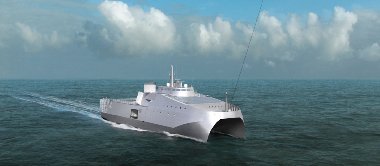ODIC, M. Maxime (2020) Statistical Description of Sporadic Upwelling/Downwelling Events and Associated Thermal Responses Along French Mediterranean Coastlines PFE - Projet de fin d'études, ENSTA.
Il s'agit de la dernière version de ce document.
Fichier(s) associé(s) à ce document :
| PDF 9Mb |
Résumé
Upwelling and downwelling are physical processes that influence both shelf hydrography and ecosystems, having consequences for key socioeconomic coastal activities such as fisheries and tourism. Combining nearshore temperature observations and long-term gridded Sea Surface Wind (SSW) product (derived from reanalysis and/or remote-sensing), we investigate the transient occurrence of wind-driven upwelling/downwelling along French Mediterranean coastlines. After validating gridded SSW datasets against wind measurements, a wind-based upwelling index is developed and compared against multi-annual time-series of in situ temperatures at nine coastal locations. It shows that our index can monitor robustly upwelling/downwelling events while highlighting typical response times of the associated oceanic cooling/warming. Then, statistical relationships between wind-based upwelling indices and thermal responses are established and used to calibrate up/downwelling events detection analyses over the last four decades for the French Mediterranean shores. We show that up/downwelling events are favored at certain portions of coastline with specific magnitude, frequency of occurrence and event duration with respect to seasonality and inter-annual variability. We demonstrate that up to 8 wind-driven downwelling days per month occur during summer along the coastline spanning 41.8°-43°N, and up to 11 days in winter for the most active downwelling cells. Conversely, shorelines ranging from 4.3°E to 6.2°E are dominated by wind-driven upwelling with mean occurrences of 11/8 days per month in winter/summer, respectively. The characteristic mean thermal response time of the coastal ocean to wind forcing for the most active cells is 36h for upwelling and 18h for downwelling. Finally, a preliminary pluri-decadal trend analysis suggests a negative trend of upwelling favorable wind frequencies and a positive trend of downwelling favorable wind frequencies for the period 1979–2019, which could have important impacts for coastal ecosystems.
| Type de document: | Rapport ou mémoire (PFE - Projet de fin d'études) |
|---|---|
| Mots-clés libres: | Sporadic upwelling/downwelling, events analysis, Northwestern Mediterranean sea, Wind-based Upwelling Index, Coastal cooling/warming, Sea Surface Wind, ERA5 Reanalysis |
| Sujets: | Sciences de la terre et génie de l'environnement Mathématiques et leurs applications |
| Code ID : | 8340 |
| Déposé par : | Maxime Odic |
| Déposé le : | 14 déc. 2020 10:15 |
| Dernière modification: | 14 déc. 2020 10:15 |
Versions disponibles de ce document
- (deposited 14 déc. 2020 10:13)
- Statistical Description of Sporadic Upwelling/Downwelling Events and Associated Thermal Responses Along French Mediterranean Coastlines (deposited 14 déc. 2020 10:15) [Actuellement Affiché]








